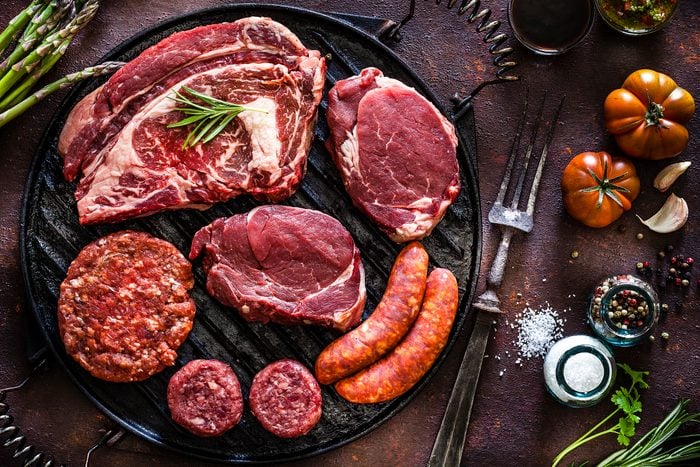
Meat in your diet
Hamburgers, hot dogs, and chicken fingers are some all-American meat products—but they’re not your best choices when it comes to meat. You don’t have to cut out all meat to be healthy, though, says Kris Sollid, RD, Senior Director, Nutrition Communications at the International Food Information Council Foundation. The healthy protein meat provides is useful: “Meat can be part of a healthy diet just as a healthy diet can be meatless,” he says. “Whether you choose to eat meat or not is up to you.” It’s a key source of vitamins and minerals like B12 and iron. Malina Linkas Malkani, RDN, media spokesperson for the Academy of Nutrition and Dietetics, recommends balance when it comes to healthy meat servings—most Americans eat more than they need. Malkani suggests filling a quarter of your plate with healthy meats and the rest with cooked vegetables, whole grains, and other plant-based foods for a balanced meal.
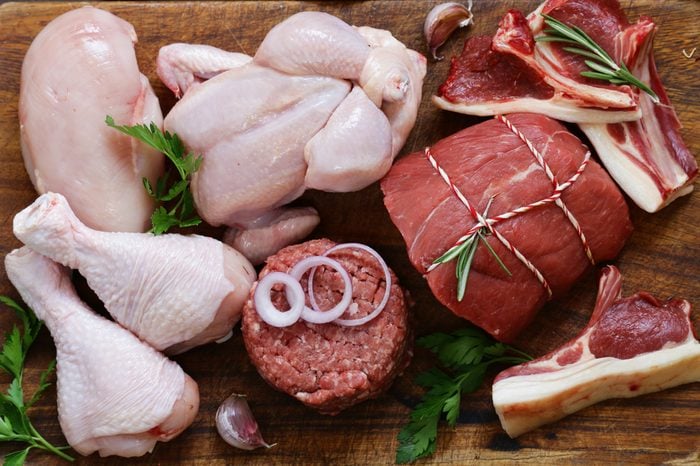
Healthy meats
1. Lean cuts of meat
The overwhelming consensus from registered dietitians is to look for lean cuts of meat. Opt for servings that deliver less than 10 grams of total fat, and 4.5 grams or less of saturated fat, which is about 3.5 ounces (think: deck of cards size). Malkani, also the creator of the Wholitarian ™Lifestyle, recommends trimming away any excess fat or skin as well as grilling, boiling, or roasting the meat to reduce the saturated fat content, too.
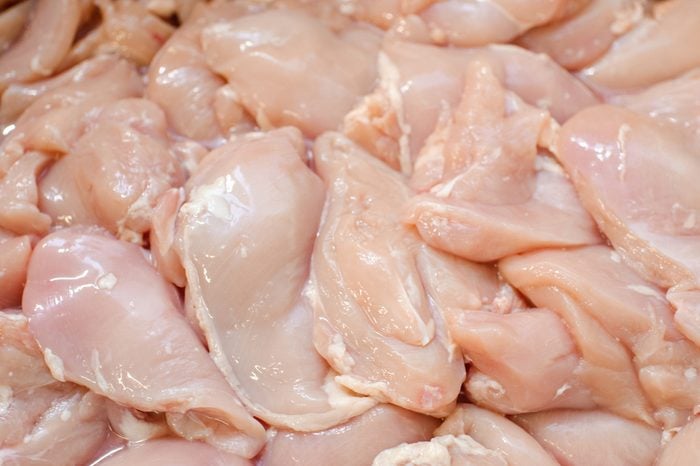
2. Skinless, light turkey meat
Turkey is one of the leaner proteins that’s also a great source of vitamin B6 and niacin, according to Sollid. These nutrients help support heart health, digestion, energy, brain function, and other bodily processes. While not as lean as other parts, turkey drumsticks and thighs are a good source of iron, too, Sollid says. Iron is key for metabolism and heart health and not getting enough in your diet could possibly lead to anemia.
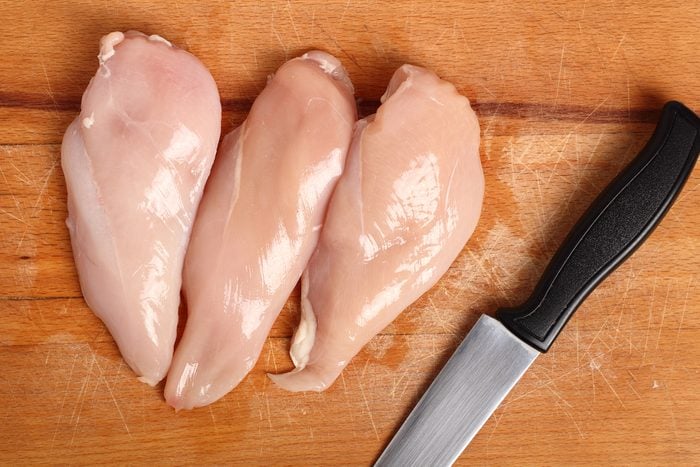
3. Skinless chicken breast
Poultry is also an excellent source of vitamin B6 and niacin, and that’s just the beginning. Research shows that it plays a positive role in maintaining a healthy weight and overall well-being, according to a study published in the Journal of Food & Nutrition Research. Plus, the white meat is an especially good source of phosphorus and riboflavin, says Sollid. Don’t discount the dark meat benefits, either. According to Sollid, dark is a better source of zinc than the white stuff.
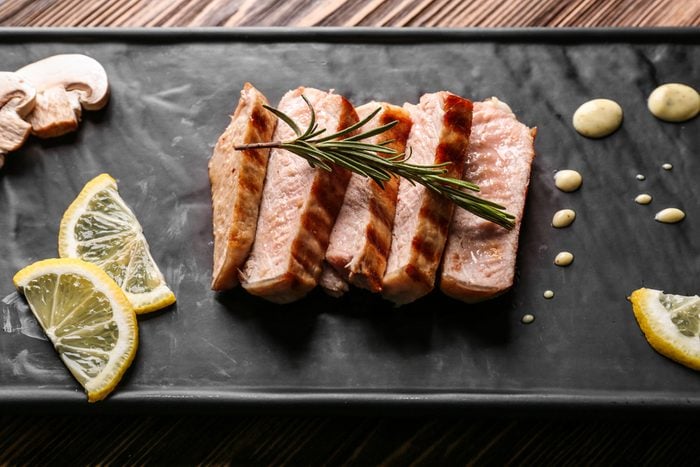
4. Pork tenderloin and pork top loin or roast
Lean cuts of pork tenderloin are a great addition to any meat eater’s diet. Pork is the most consumed meat around the globe: The Food and Agriculture Organization of the United Nations says that it accounts for more than 36% of the world’s meat intake. You’ll get tons of nutrients, including thiamin, vitamin B6, potassium, riboflavin, and more, says Sollid.
10 Things that Happen to Your Body If You Stop Eating Red Meat
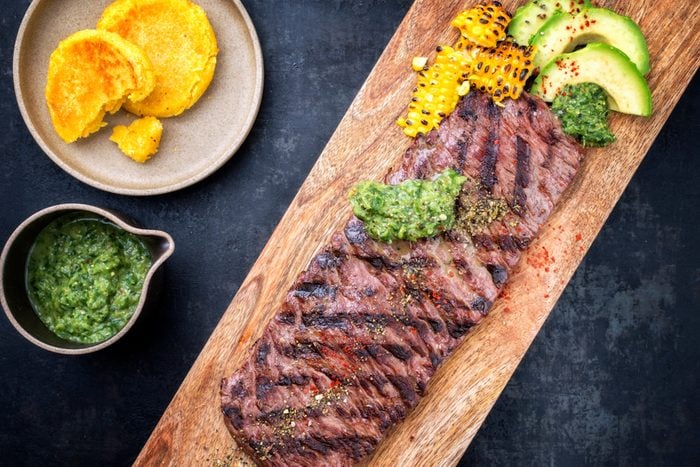
5. Flank, strip steak and 95% lean ground beef
Red meat gets a bad rap, but lean cuts of red meat can be part of a healthy diet, according to 2016 research published on Proceedings of the Nutrition Society. Much like other meats, beef is a great source of protein and essential nutrients. If possible, opt for grass-fed beef to take in more vitamin E and antioxidants. Also, make sure to avoid burning or charring any beef—any meat for that matter: Research indicates that the burnt stuff may boost the risk for some cancers.
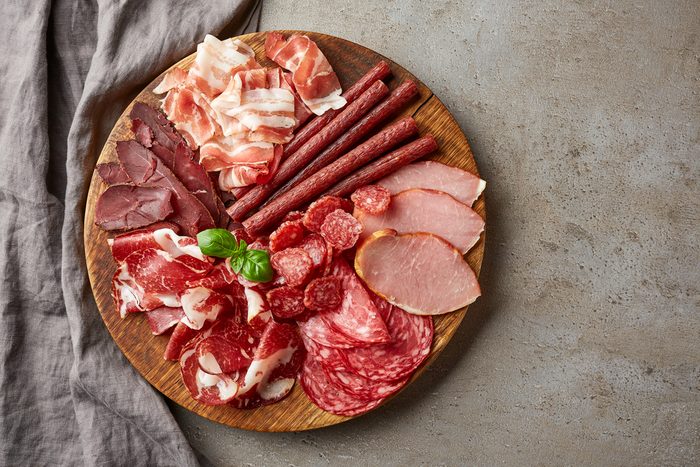
Least healthy meats
1. Processed meats
Cured meats, cold cuts, salami, and hot dogs are just a few examples of processed meats to limit or avoid. Scientific consensus confirms that eating large amounts of these processed meats will raise your risk of colon cancer. These meats are often high in both sodium and saturated fats, Malkani says. High sodium intake, including that in processed meats, is associated with mortality from heart disease, stroke, and type 2 diabetes.
Eating This Every Day Could Damage Your Brain Health, Says New Study
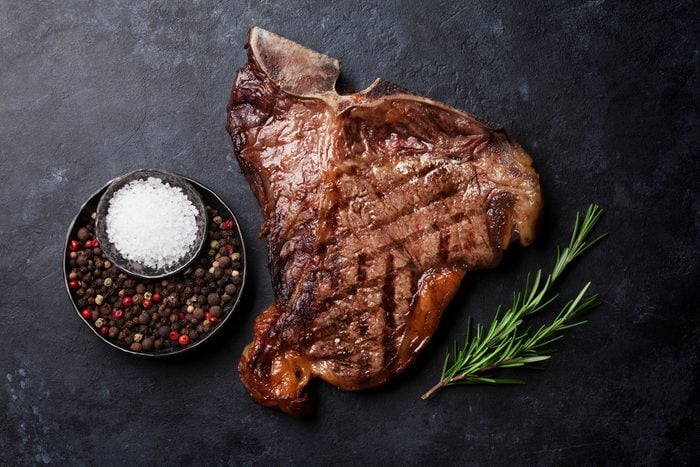
2. Fattier cuts of meat
You’ll want to keep fattier cuts of meat off your plate: Their high load of saturated fats may raise your cholesterol levels and contribute to heart disease, according to the American Heart Association. Which cuts are worrisome? Think rib-eye steak, T-bone steak, and New York strip steak, for starters. In the pork family, ribs and bacon; with poultry, drumsticks, and the skin tend to be the fattiest. Although limiting these cuts of meat is good for your diet, you can enjoy them in moderation, according to Sollid. Next, check out how long meat lasts in the fridge.
How to buy healthier meat
A few tips to help you make sure you’re buying healthier meat include:
- Opting for organic: A 2016 meta-analysis published in the British Journal of Nutrition reviewed 67 studies that compared organic and non-organic meat products. While it found that in general they were nutritionally similar, organic meats had lower concentrations of saturated fatty acids (SFA), a high consumption of which can increase your risk of heart disease.
- Going for grass-fed: A 2022 study published in Food Science of Animal Resources suggests there’s also a notable difference in the fat content of grass-fed beef compared to grain-fed beef. Grain-fed beef is far more common in the United States—according to Montana State University, 95% of cattle in the US are fattened on grain-based diets—but going the extra mile to select grass-fed can have huge benefits for your health. The 2022 study suggests that eating grass-fed beef could actually offer protection against several diseases, from cancer to cardiovascular disease, due to the decreased SFA content and an increased amount of healthy polyunsaturated fatty acids (PUFA), particularly omega-3s, which can help reduce bad cholesterol levels in your blood.
- Picking pasture-raised: Much like grass-fed beef, pasture-raised poultry and pork offer specific health benefits. According to the American Pastured Poultry Producers Association and Piedmont Healthcare, compared to conventionally-raised chickens, the meat and eggs from pasture-raised chicken tends to be higher in iron, higher in omega-3s, and higher in antioxidants such as Vitamin E. Meat from pasture-raised pork also contains a similar healthier fat quality and increased nutrients than meat from conventionally-raised pork, according to Hampshire College.
What Is Processed Meat and Is It Bad for Your Health?
Other good sources of lean protein
If you want to cut down on your meat intake in general, there are plenty of alternative healthy protein sources low in fat. Harvard Health recommends dairy products such as Greek yogurt, beans, peas, lentils, nuts, seeds, quinoa and soy products. For more options, check out the 10 ‘Perfect Proteins,’ according to a nutrition expert.

